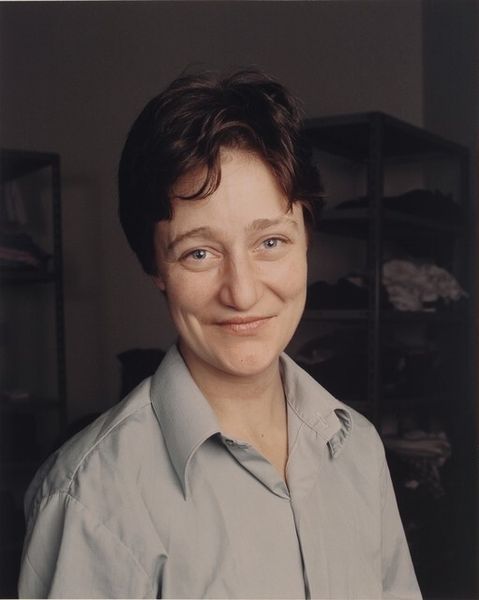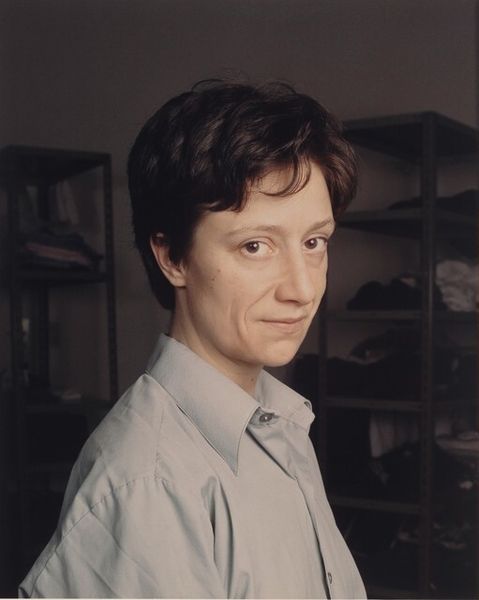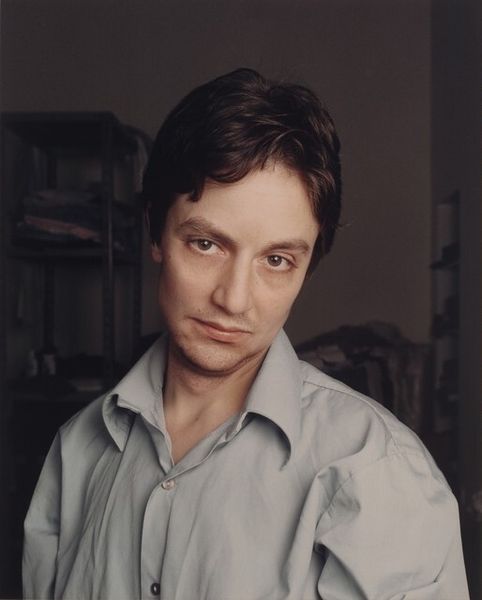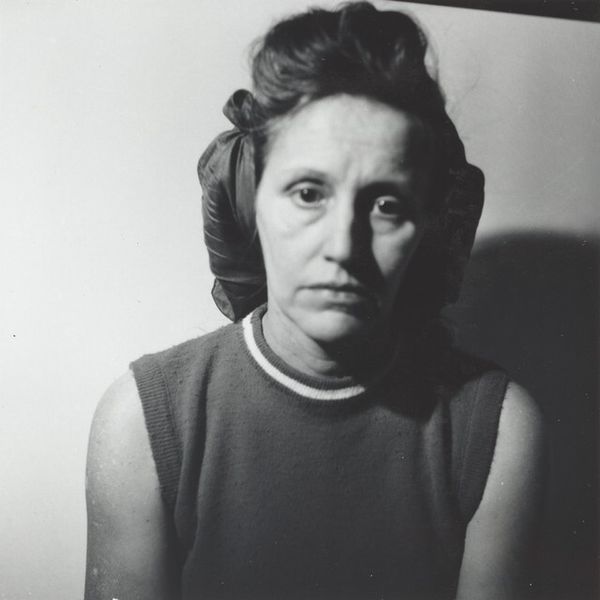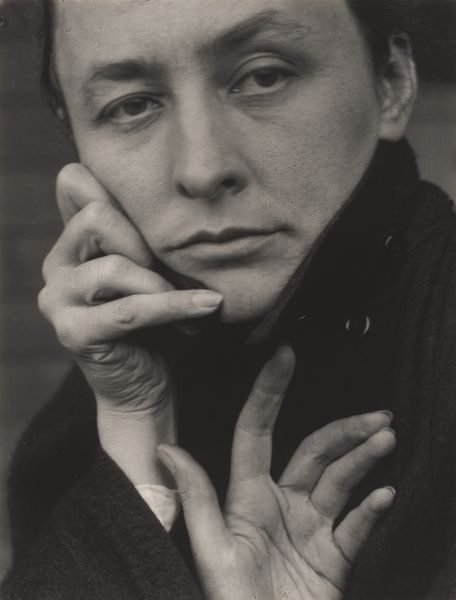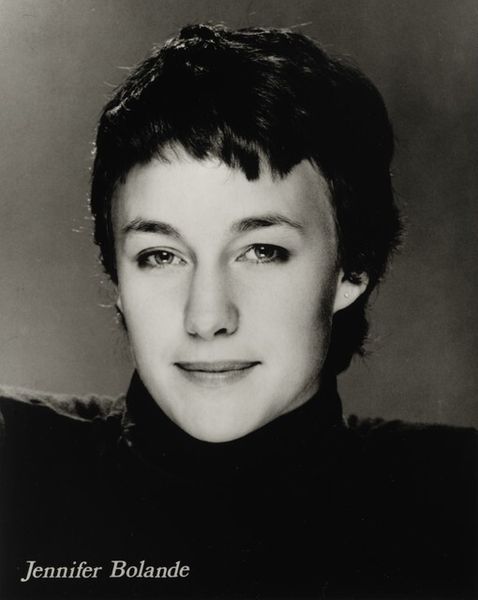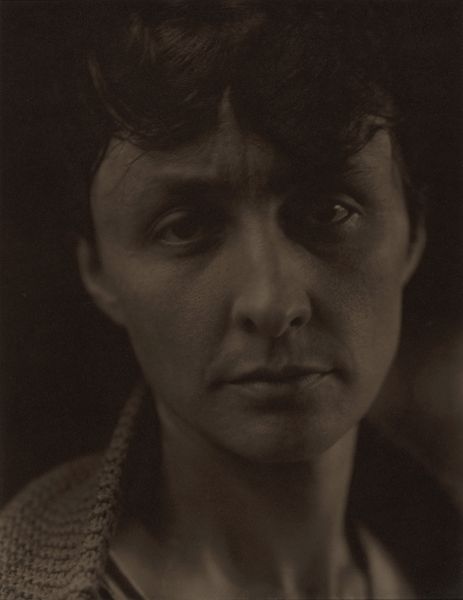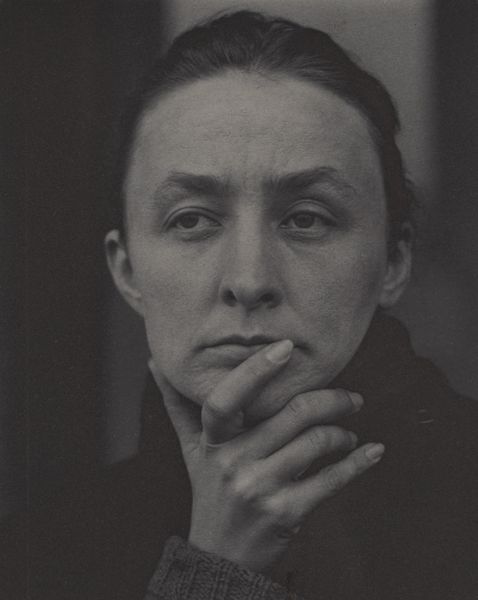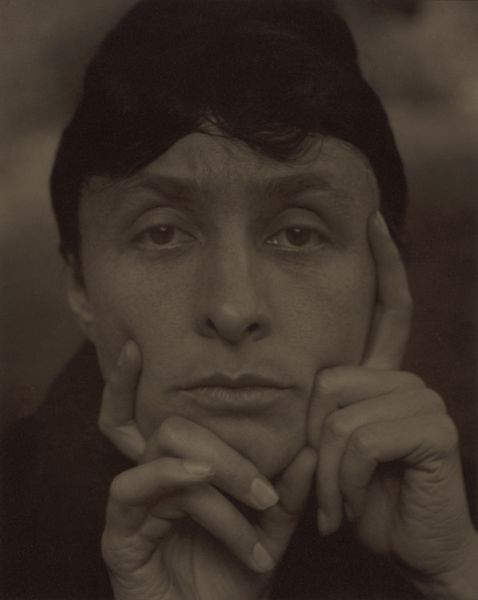
photography
#
portrait
#
contemporary
#
portrait subject
#
street-photography
#
photography
#
modernism
#
portrait photography
Dimensions: image: 45.7 x 36.6 cm (18 x 14 7/16 in.) sheet: 46.4 x 37.3 cm (18 1/4 x 14 11/16 in.)
Copyright: National Gallery of Art: CC0 1.0
Curator: Vibeke Tandberg’s photographic work, "Faces #5" from 1998, part of a larger series of portraits, offers a compelling example of contemporary portraiture. Editor: It's immediately striking, isn’t it? Very direct. Almost confrontational with that intense gaze. But also somehow...vulnerable? The lighting adds to that effect, focusing all the attention on her face. Curator: Exactly, there is this play of light and shadow, though subtly done. Notice how the composition frames the face, directing our attention to the sitter's eyes—such clear and arresting light blue. The simple button-down shirt almost disappears; it gives a common feel. Editor: Right! It strips away any potential distraction from clothing or adornment, so there isn't any need to question wealth or class. It is a formal, flat view but yet deeply human. And the neutral background only emphasizes the subject. I also think there is a strange quality in its slightly out-of-focus areas, it’s not crystal clear. Like we’re viewing a memory fading. Curator: It's fascinating you say that. Given Tandberg’s broader artistic concerns with identity and representation, especially gender performativity, one could see this piece as questioning the construction of the self, or an intentional deconstruction of societal ideals. Editor: Oh, interesting, so the blurriness… it's almost like suggesting that identity itself isn't quite in sharp focus. The series title “Faces,” with that numbering too, lends it this very modern feeling, or I’d even say, kind of artificial. As though the work is factory-produced… that takes something away from the idea of portrait as a depiction of one particular human being. Curator: An intriguing interpretation, as it reminds me that sometimes what truly moves us about a portrait is its capacity to remind us of ourselves—or perhaps even more poignantly, of who we could be, behind the everyday mask. Editor: Agreed, in art—like life—maybe the true beauty resides in the ambiguities, those lingering uncertainties that stay with us long after we've looked away.
Comments
No comments
Be the first to comment and join the conversation on the ultimate creative platform.


